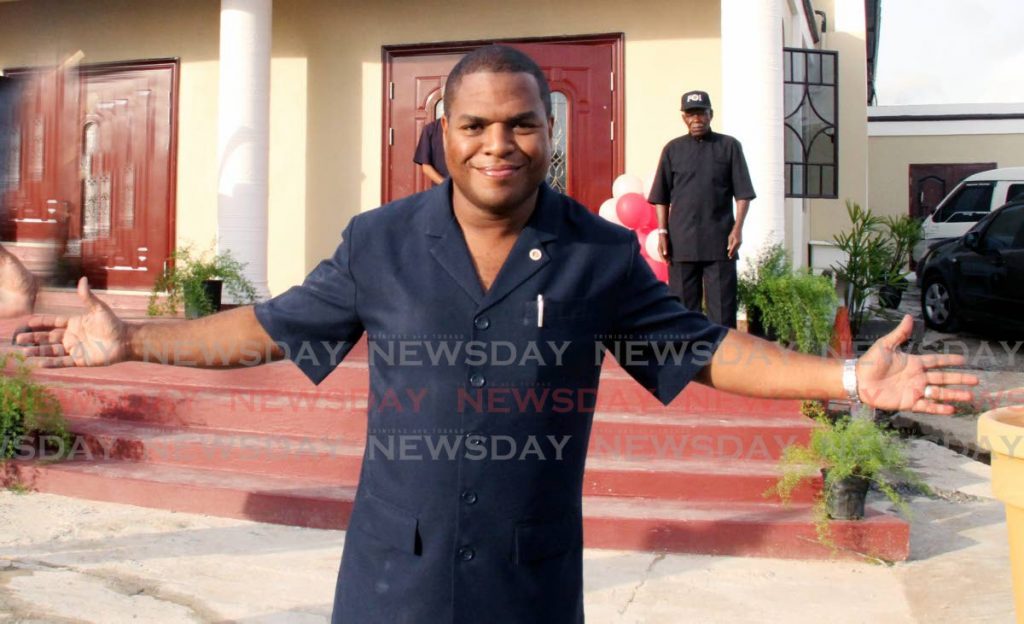1970 history advocates: Keep 'black' in Black Power

Despite efforts to reclassify the Black Power Revolution as the TT Revolution or the 1970s Revolution, the fact is that it began as a movement with and for Afro-Trinidadians.
David Muhammad of The Nation of Islam told Sunday Newsday he noticed there had been attempts to remove the reference to “black” from the movement and to redefine it.
He explained that there were three major pillars that led up to February 25 and the Black Power Movement. The first was the ideology of Nation of Islam leader Elijah Muhammad which was passed on to Malcolm X and TT-born Kwame Ture who popularised the phrase Black Power in June 1966 through a speech in Mississippi.
The second, he said, was a lecturer at UWI, Mona campus, Walter Rodney of Guyana. Rodney had started a reform programme with Rastafarians in Jamaica which started a consciousness with them. He also wrote a publication, Groundings with my Brothers, and was active in the Black Power Movement.
“UWI did not renew his lecturing contract and there was a movement among the students that grew and spread to Trinidad. Then in 1968 in Trinidad a group of university students marched on White Hall, Dr (Prime Minister Eric) Williams’ office, in protest to deliver a letter calling in him to immediately reinstate Dr Walter Rodney.”
The third was a protest against racism. A lecturer at the Sir George Williams University in Montreal, Canada was failing black students, including TT students who were studying there. In 1969, a movement was started in support of them which, again, spread to TT, and led to the march on February 26, 1970.
Those, he said, were the reasons why the word black could not be removed from the discussion, because the impetus for the movement was about black, African, people.

Muhammad said that was why his organisation, the Black Agenda Project, acquired land from the state and built the Kwame Ture Education Centre in Laventille with no assistance from the state or corporate entities, in honour of the Black Power Movement.
Former unionist, politician, and journalist, Raffique Shah, agreed saying he was disturbed by the attempt to change the narrative of the movement.
“When it hit the streets, it did so as Black Power. All the images were of people of African descent with afro hairstyles, the dashikis, the sandals and other African garb. That was up until we got to the point (in early) April, which was well into the 54 active days this played out in Trinidad and even in Tobago, when the African and Indians united and marched into central Trinidad. So to suggest that it started out as the TT revolution and not the Black Power Revolution, I don’t think that is correct, and I don’t think we need to re-write history.”
He said the movement had no obligation to reach out to Indo-Trinidadians because it was about the important issues of Afro-consciousness which lost during slavery. He explained the sugar workers were unhappy with their union leader and when the Black Power Revolution came about, they were emboldened to act and then join with the movement.
“They had no African culture left, no religion left. That was beaten out of them and they were made into putty in the hands of the colonial powers and the slave masters.”
He added that in the 1950s and 60s the average Afro-Trinidadian could not relate to the African continent and in movies black people were characters to be laughed at. Therefore the National Joint Action Committee, which was in existence before the movement started on February 26, got the opportunity to infuse Afro-consciousness in TT and the wider Caribbean was important and necessary.
“I don’t see why people should come now and say it wasn’t so. The Indians couldn’t identify with it. Some eventually came around, but that was not across the board. That was the sugar workers (separate from the sugar farmers) who, admittedly, comprised the biggest chunk of the Indo-Trinidad population.”

Comments
"1970 history advocates: Keep ‘black’ in Black Power"